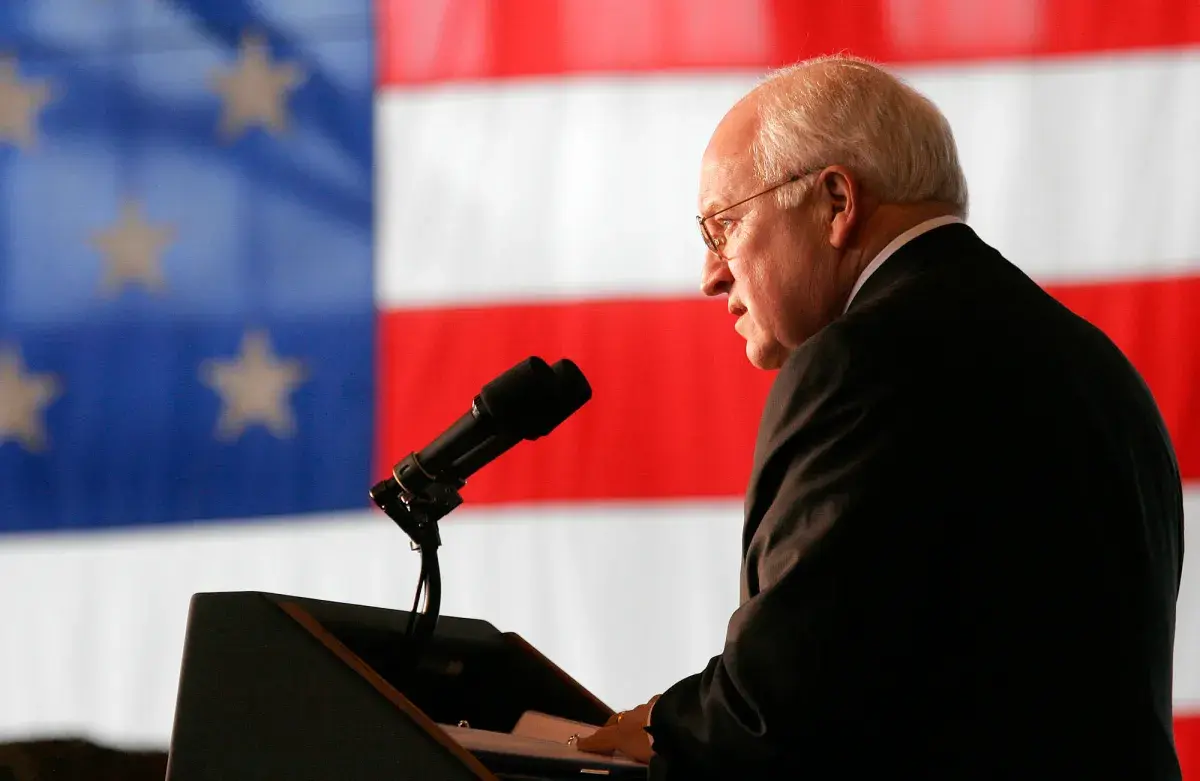Copyright Newsweek

Dick Cheney, who served as vice president under President George W. Bush and became one of the most powerful and polarizing figures in modern American politics, has died at 84, his family said Tuesday. From his beginnings in small-town Wyoming to his years at the heart of two Bush administrations, his life traced a path through half a century of American government—marked by strategic mastery, fierce controversy, and an unyielding belief in the exercise of authority. Dick Cheney's Early Years: 1941-1975 Born in Lincoln, Nebraska, in 1941 and raised in Casper, Wyoming, Cheney grew up in the wide-open plains of the American West, where he developed the self-reliance and quiet determination that would later define his political style. Cheney met his future wife, Lynne Vincent, while both were teenagers at Natrona County High School in Casper, Wyoming—a partnership that began at a local debate competition and endured through every chapter of his public life. Together, Dick and Lynne Cheney raised two daughters, Liz and Mary, who would each forge their own paths in public life—Liz as a prominent Republican congresswoman and Mary as an advocate for LGBTQ+ rights. Dick Cheney in Washington: 1975-1993 After brief stints as a congressional aide, he became chief of staff to President Gerald Ford in 1975—one of the youngest ever to hold the post—during a turbulent period that tested the resilience of post-Watergate America. Elected Wyoming’s sole member of Congress in 1978, Cheney built a reputation as a pragmatic conservative and skilled tactician. When President George H.W. Bush tapped him as secretary of defense in 1989, Cheney oversaw Operation Desert Storm—the swift and decisive campaign that expelled Iraqi forces from Kuwait. The success made him a leading figure in defense strategy, even as he resisted calls to push on to Baghdad. Dick Cheney in the Private Sector: 1993-2000 After serving as defense secretary, Cheney left Washington for the private sector, where he became chairman and CEO of the Texas-based energy conglomerate Halliburton in 1995. During his six years at the helm, he expanded the company’s global operations and positioned it as a major government contractor in energy and defense services. His tenure brought him wealth and influence, but also enduring controversy, as Halliburton later won substantial contracts during the wars he helped shape as vice president. The period cemented Cheney’s image as a figure who moved seamlessly between the worlds of business, politics, and national security. Dick Cheney Returns to Politics: 2000 In 2000, Texas Governor George W. Bush tapped Cheney to lead the search for his vice-presidential running mate—a process that, in a twist of political irony, ended with Cheney himself emerging as the choice. His selection brought experience and establishment credibility to the Republican ticket, balancing Bush’s image as a relative newcomer to national politics. Throughout the campaign, Cheney’s calm authority and deep grasp of policy helped steady the team, most notably during his widely praised debate performance against Democrat Joe Lieberman. After one of the closest elections in U.S. history, the outcome hinged on a disputed Florida vote count and a Supreme Court decision that effectively handed Bush the presidency. When Al Gore conceded on December 13, Cheney was poised to assume the vice presidency, ready to become one of the most powerful and consequential figures ever to hold the office. Vice President Dick Cheney: 2001-2009 As vice president, Cheney wielded influence unlike any before him. In the wake of the September 11 attacks, he became the architect of America’s war on terror—advocating the invasions of Afghanistan and Iraq, expanding executive power, and defending controversial “enhanced interrogation” techniques. To supporters, he was a steady hand in crisis; to critics, the embodiment of secrecy and overreach. In 2006, Cheney’s accidental shooting of a fellow hunter in Texas became an odd, symbolic flashpoint in a career marked by control and controversy. Plagued by heart troubles for decades, he received a transplant in 2012, later chronicling his life in memoirs and media appearances. Post-White House and Later Years: 2009-2025 In the years following his time in the White House, Cheney’s political influence evolved through his family. His elder daughter, Liz Cheney, rose to prominence as a congresswoman from Wyoming and later broke with much of her party by opposing President Donald Trump and serving on the House committee investigating the January 6 attack on the U.S. Capitol. Her father supported her stance, publicly condemning Trump’s actions and reaffirming his belief in the rule of law—a position that distanced him from many in the modern Republican Party. In 2024, he endorsed Democratic Vice President Kamala Harris for the presidency. By the time of his death in 2025, Dick Cheney had come to embody both the power and the paradox of modern American conservatism: a man of conviction and calculation, revered and reviled in equal measure. His later years were spent largely in Wyoming and Virginia, where he continued to write, mentor, and occasionally weigh in on national debates. Whether viewed as a patriot who protected America or as the architect of an era of overreach, Cheney’s legacy remained one of lasting influence—a testament to the enduring force of political will.



